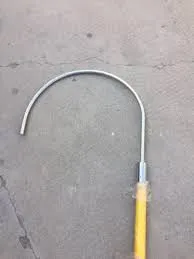
-
 Afrikaans
Afrikaans -
 Albanian
Albanian -
 Amharic
Amharic -
 Arabic
Arabic -
 Armenian
Armenian -
 Azerbaijani
Azerbaijani -
 Basque
Basque -
 Belarusian
Belarusian -
 Bengali
Bengali -
 Bosnian
Bosnian -
 Bulgarian
Bulgarian -
 Catalan
Catalan -
 Cebuano
Cebuano -
 Corsican
Corsican -
 Croatian
Croatian -
 Czech
Czech -
 Danish
Danish -
 Dutch
Dutch -
 English
English -
 Esperanto
Esperanto -
 Estonian
Estonian -
 Finnish
Finnish -
 French
French -
 Frisian
Frisian -
 Galician
Galician -
 Georgian
Georgian -
 German
German -
 Greek
Greek -
 Gujarati
Gujarati -
 Haitian Creole
Haitian Creole -
 hausa
hausa -
 hawaiian
hawaiian -
 Hebrew
Hebrew -
 Hindi
Hindi -
 Miao
Miao -
 Hungarian
Hungarian -
 Icelandic
Icelandic -
 igbo
igbo -
 Indonesian
Indonesian -
 irish
irish -
 Italian
Italian -
 Japanese
Japanese -
 Javanese
Javanese -
 Kannada
Kannada -
 kazakh
kazakh -
 Khmer
Khmer -
 Rwandese
Rwandese -
 Korean
Korean -
 Kurdish
Kurdish -
 Kyrgyz
Kyrgyz -
 Lao
Lao -
 Latin
Latin -
 Latvian
Latvian -
 Lithuanian
Lithuanian -
 Luxembourgish
Luxembourgish -
 Macedonian
Macedonian -
 Malgashi
Malgashi -
 Malay
Malay -
 Malayalam
Malayalam -
 Maltese
Maltese -
 Maori
Maori -
 Marathi
Marathi -
 Mongolian
Mongolian -
 Myanmar
Myanmar -
 Nepali
Nepali -
 Norwegian
Norwegian -
 Norwegian
Norwegian -
 Occitan
Occitan -
 Pashto
Pashto -
 Persian
Persian -
 Polish
Polish -
 Portuguese
Portuguese -
 Punjabi
Punjabi -
 Romanian
Romanian -
 Russian
Russian -
 Samoan
Samoan -
 Scottish Gaelic
Scottish Gaelic -
 Serbian
Serbian -
 Sesotho
Sesotho -
 Shona
Shona -
 Sindhi
Sindhi -
 Sinhala
Sinhala -
 Slovak
Slovak -
 Slovenian
Slovenian -
 Somali
Somali -
 Spanish
Spanish -
 Sundanese
Sundanese -
 Swahili
Swahili -
 Swedish
Swedish -
 Tagalog
Tagalog -
 Tajik
Tajik -
 Tamil
Tamil -
 Tatar
Tatar -
 Telugu
Telugu -
 Thai
Thai -
 Turkish
Turkish -
 Turkmen
Turkmen -
 Ukrainian
Ukrainian -
 Urdu
Urdu -
 Uighur
Uighur -
 Uzbek
Uzbek -
 Vietnamese
Vietnamese -
 Welsh
Welsh -
 Bantu
Bantu -
 Yiddish
Yiddish -
 Yoruba
Yoruba -
 Zulu
Zulu


Nov . 23, 2024 04:28 Back to list
driving ground rods in rock
Driving Ground Rods in Rock Techniques and Considerations
Grounding systems are vital in ensuring the safety and reliability of electrical installations. Among the various methods of establishing a grounding system, driving ground rods into rock poses unique challenges and requires specialized techniques to achieve an effective grounding solution. In this article, we will explore the significance of grounding, the factors to consider when driving ground rods in rock, and the methods suitable for this task.
Importance of Grounding
Grounding provides a path of least resistance for electrical faults, directing excess electric current safely into the earth. This is crucial for protecting equipment, personnel, and structures from electrical surges, lightning strikes, and accidental contact with live circuits. A reliable grounding system ensures personal safety and plays a pivotal role in the performance of electrical systems.
Challenges of Grounding in Rock
Rock presents distinct challenges when installing grounding rods. Unlike soil, which is relatively easier to penetrate and offers better conductivity, rock can be hard and unyielding. Various factors complicate the process, including the type of rock, the depth required for effective grounding, and the potential for fracturing the rock during installation. Geotechnical conditions must be assessed thoroughly to determine the best approach.
Factors to Consider
1. Rock Type The hardness and composition of the rock significantly affect the choice of tools and methods for driving ground rods. Sedimentary rocks like sandstone exhibit different characteristics compared to igneous rocks such as granite.
2. Resistance Levels Ideally, ground resistance should be below 25 ohms for effective performance. Conductivity depends not only on the properties of the rock but also on moisture content, temperature, and mineral composition.
driving ground rods in rock

3. Depth Requirements Ground rods should be driven to a depth that enables them to make effective contact with the earth. This often means going well beyond surface rock into softer layers or directly into bedrock, which requires careful planning.
Methods of Driving Ground Rods in Rock
1. Pre-Drilling One effective method for driving ground rods in rock is to pre-drill holes using a rotary drill. This allows for a pilot hole to be established, reducing the risk of damaging the ground rod during installation. The diameter of the hole should be larger than the rod to facilitate insertion.
2. Hydraulic Equipment For particularly dense rock, using hydraulic equipment may be necessary. Hydraulic post drivers can exert significant force, allowing ground rods to be driven deeper and more efficiently into the rock.
3. Chemical Grouting In some cases, chemical grouts can be used to enhance conductivity. The grout is injected into the drilled hole, creating a moisture path that increases the contact area between the rod and the surrounding rock. This method can be particularly effective in dry environments.
4. Alternative Materials Instead of traditional copper or galvanized steel rods, consider using conductive concrete or specially designed ground electrodes that can be embedded into the rock.
Conclusion
Driving ground rods in rock presents unique challenges that require careful assessment and specialized techniques. By understanding the characteristics of the rock and utilizing appropriate methods, an effective grounding solution can be established. Ensuring a low-resistance path to earth is crucial for the safety and performance of electrical systems, and proper installation is key to achieving this goal. With the right approach, even the hardest rock can yield a reliable grounding system.
Latest news
What Are Construction Tools and How Are They Used?
NewsJul.11,2025
Professional-Grade Duct Rodding Tools for Superior Cable Installation
NewsJul.11,2025
Enhancing Safety and Efficiency with Modern Hot Stick Solutions
NewsJul.11,2025
Empowering Cable Installation with Advanced Rodder Solutions
NewsJul.11,2025
Elevate Your Cable Installation Projects with Cable Pulling Tools
NewsJul.11,2025
Efficient Cable Handling Solutions: Cable Rollers for Sale
NewsJul.11,2025











